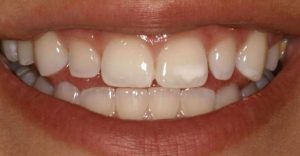Can You Restore Tooth Enamel? Exploring the Options
When it comes to oral health, tooth enamel plays a crucial role in protecting your teeth from decay and damage. However, due to various factors such as poor oral hygiene, acidic foods and drinks, and certain medical conditions, tooth enamel can become eroded over time. Many people wonder if it is possible to restore tooth enamel once it has been lost. In this article, we will explore the options available for restoring tooth enamel and discuss their effectiveness.
The Importance of Tooth Enamel
To understand the significance of restoring tooth enamel, it’s essential to grasp its role in maintaining optimal oral health. Tooth enamel is the outer layer of your teeth and acts as a protective shield against the effects of plaque, bacteria, and acid. It is the hardest substance in the human body and provides strength and durability to your teeth.
However, enamel is not indestructible. It can gradually wear away due to various reasons, including:
- Poor oral hygiene
- Acidic foods and drinks
- Teeth grinding
- Acid reflux
- Medical conditions like acid erosion
Prevention: The First Line of Defense
Before diving into the options for restoring tooth enamel, it’s crucial to emphasize the importance of prevention. Taking proactive measures to protect your tooth enamel can significantly reduce the likelihood of enamel erosion and the need for restoration procedures. Here are some preventive measures:
- Brushing your teeth at least twice a day with fluoride toothpaste
- Flossing daily to remove plaque from between your teeth
- Using a soft-bristled toothbrush and avoiding aggressive brushing
- Limiting the consumption of acidic foods and beverages
- Using a straw when drinking acidic beverages
- Regular dental check-ups and professional cleanings
Restoring Tooth Enamel
1. Remineralization
Remineralization is a process that involves restoring minerals to the tooth enamel, making it stronger and more resistant to decay. This can be achieved through the use of remineralizing toothpaste and mouth rinses that contain fluoride and calcium phosphate. These products help to replenish the lost minerals and repair the weakened enamel. Regular use of remineralizing agents, along with proper oral hygiene practices, can contribute to the restoration of tooth enamel to some extent.

2. Dental Bonding
Dental bonding is a cosmetic dental procedure that can also be used to restore tooth enamel. In this procedure, a tooth-colored resin material is applied to the surface of the affected tooth and bonded using a special light. Dental bonding can improve the appearance of the tooth, repair minor chips and cracks, and protect the underlying enamel from further damage. While dental bonding does not replace the lost enamel, it provides an aesthetic solution and helps prevent further enamel erosion.
3. Dental Veneers
Dental veneers are another option for restoring the appearance of teeth with damaged enamel. Veneers are thin shells made of porcelain or composite resin that are custom-made to fit over the front surface of the teeth. They can effectively cover up enamel imperfections, such as stains, chips, and cracks, providing a natural-looking smile. While veneers do not restore the lost enamel, they offer a long-lasting solution for improving the aesthetics of your teeth and protecting the underlying enamel.
4. Tooth-Colored Fillings
If tooth decay has caused enamel loss, tooth-colored fillings can be used to restore the affected area. These fillings are made of composite resin material that matches the color of your natural teeth. The decayed portion of the tooth is removed, and the filling material is applied to the cavity, restoring the tooth’s shape and function. While tooth-colored fillings do not restore the original enamel, they provide a durable and visually pleasing solution to prevent further decay and restore the tooth’s integrity.
5. Crowns or Dental Caps
In cases where significant enamel loss has occurred, a dental crown or cap may be necessary. A crown is a tooth-shaped restoration that fits over the remaining tooth structure, providing strength, protection, and aesthetic improvement. The process involves removing the damaged enamel, shaping the tooth, and placing a custom-made crown over it. Dental crowns can restore the appearance and functionality of severely damaged teeth, but they do not regenerate natural enamel.

The Limitations
While the aforementioned procedures offer solutions for restoring tooth enamel to some extent, it’s important to note that once enamel is lost, it cannot be naturally regenerated by the body. Therefore, the goal of these restoration options is to provide functional and cosmetic improvements rather than actually regrowing the enamel. It’s crucial to practice good oral hygiene and preventive measures to protect the remaining enamel and prevent further erosion.
Conclusion
While it is not possible to restore natural tooth enamel once it is lost, there are various options available to improve the appearance and functionality of teeth affected by enamel erosion. Remineralization, dental bonding, veneers, tooth-colored fillings, and dental crowns are some of the procedures that can help address the effects of enamel loss. However, prevention through good oral hygiene practices and regular dental check-ups remains the key to maintaining healthy tooth enamel. Consulting with a dentist is essential to determine the most suitable restoration option for your specific case. Remember, protecting and preserving your existing enamel is crucial for long-term oral health. https://kickassdental.com.au/dentist-in-croydon-park/
Disclaimer: This article is for informational purposes only and should not be considered as medical advice. Always consult with a qualified dentist or healthcare professional for proper diagnosis and treatment.





